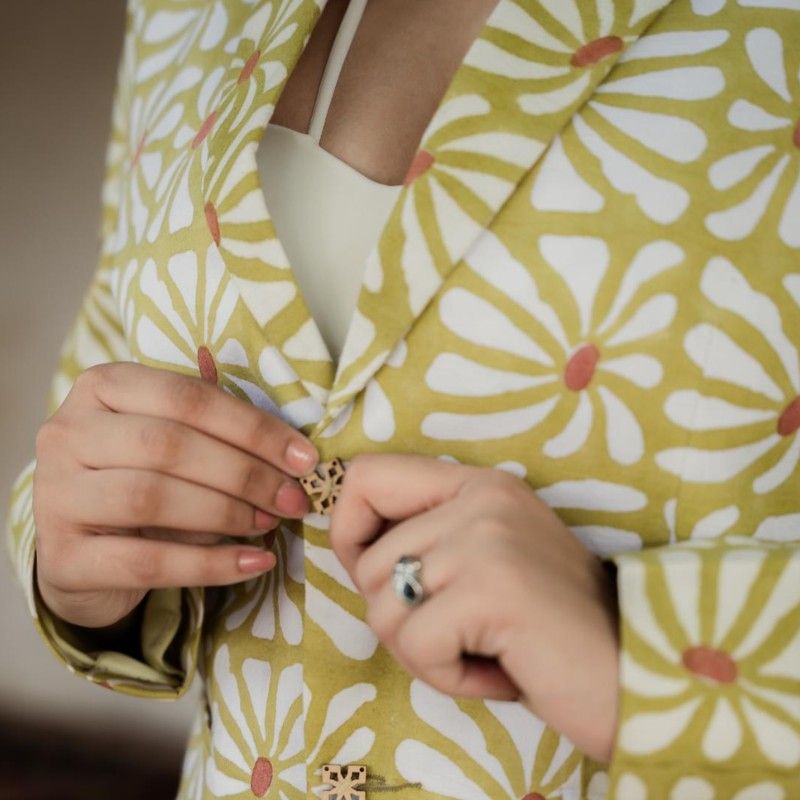India’s legacy in craftsmanship is deeply interwoven with its cultural heritage and historical significance as a center of global trade. For centuries, Indian artisans have been the bearers of a tradition that blends beauty, creativity, and skill. The mastery of handwoven textiles, intricate embroidery, and innovative dyeing techniques has not only defined the fabric of Indian life but has also shaped the fashion landscape worldwide.
The Birth of Indian Craftsmanship
The roots of Indian craftsmanship trace back to ancient civilizations like the Indus Valley (around 2500 BCE), where archeologists have found evidence of finely woven cotton and dyed fabrics. India was one of the first regions in the world to grow and spin cotton, and the subcontinent’s early mastery over textile production established it as a significant trading hub.
One of the earliest mentions of Indian textiles comes from ancient Egyptian tombs, where fragments of Indian cotton have been found, suggesting robust trade networks as early as 2500 BCE. Indian textiles—especially cotton, silk, and wool—became coveted exports for their remarkable quality, artistic designs, and durability.
Global Trade and the Rise of Indian Exports
By the medieval period, India’s textile trade was flourishing, with Indian merchants trading extensively across Africa, the Middle East, Southeast Asia, and Europe. The famed “Muslin of Bengal,” a fine cotton fabric so delicate that it was called “woven air,” gained immense popularity in Europe during the 17th and 18th centuries. Indian silk, embroidered with gold and silver threads, and brocade fabrics from Banaras adorned royal courts and nobility across the globe.
As maritime trade routes opened, India became the epicenter of the spice and textile trade, particularly during the Mughal era (16th-18th centuries), which saw the height of Indian textile exports. Indian handloom, embroidery techniques like zardozi and kantha, and dyeing methods like bandhani and ajrakh became symbols of opulence and craftsmanship, sought after by royal families and traders alike.
Colonial Exploitation and the Decline of Indian Textiles
During the colonial period, particularly under British rule, India’s thriving textile industry began to decline. British policies were designed to favor the machine-made textiles of Britain, which led to the destruction of traditional handloom industries in India. However, even under British rule, Indian craftsmanship persevered. The legendary charkha (spinning wheel), symbolized by Mahatma Gandhi, became an emblem of India’s resistance to colonial oppression and an icon of self-reliance.
Despite the industrial revolution in the West, which replaced much of the labor-intensive processes, Indian artisans continued to nurture their crafts, keeping alive the handmade textile tradition. Post-independence, efforts were made to revive these ancient techniques, which played an essential role in boosting local economies and reclaiming India’s heritage.
The Modern Renaissance of Indian Handmade Textiles
Today, India stands as one of the largest exporters of handmade textiles globally, reclaiming its ancient status as a hub for artisanal crafts. Indian textiles are appreciated for their eco-friendliness, sustainability, and use of natural fibers. The country’s vibrant handloom sector employs millions of artisans, many of whom continue to practice traditional methods passed down through generations.
Regions like Gujarat, Rajasthan, Andhra Pradesh, and West Bengal are home to distinctive crafts such as Bandhani (tie-dye), Ajrakh (block printing), and Phulkari (embroidery). The resurgence of these crafts in the global fashion scene, driven by sustainable fashion movements and a growing appreciation for slow fashion, has opened new avenues for Indian artisans.
Indian textile traditions like Sanganeri block printing and Madhubani painting are also becoming globally recognized, not just for their aesthetic appeal but for the cultural stories they represent. The use of natural dyes, hand-spun threads, and handmade techniques makes Indian textiles one of the most eco-friendly choices in the fashion industry today.
India’s Contribution to Global Fashion
The revival of Indian textiles has caught the attention of designers and fashion houses across the world. International fashion giants often incorporate Indian techniques into their collections, drawing inspiration from centuries-old patterns, weaves, and dyes. Brands focusing on slow fashion have also partnered with Indian artisans, ensuring that the rich legacy of Indian craftsmanship is preserved while promoting ethical production practices.
From khadi to hand-block prints, Indian craftsmanship is now at the forefront of conscious consumerism. The handcrafted elements and the imperfections of handmade work reflect the artisan’s hand, making each piece unique, personal, and timeless. India’s ability to blend the ancient with the modern allows it to maintain its position as one of the most prominent exporters of handmade textiles, a status that shows no signs of waning.
Conclusion
Indian craftsmanship, with its rich history and enduring global impact, continues to be a cornerstone of the handmade textile industry. As the world shifts toward sustainable and ethical practices, the demand for Indian handmade textiles is growing, providing opportunities for artisans to flourish while preserving their craft. In the global narrative of fashion, India remains a leader in blending tradition with innovation, offering products that are not just textiles, but stories woven into fabric.
With each piece of cloth, Indian artisans stitch together centuries of culture, creativity, and craftsmanship—a legacy that continues to shine on the global stage.









Leave a comment